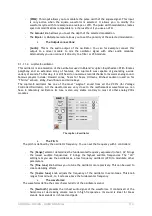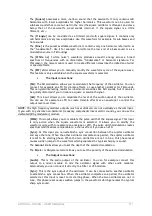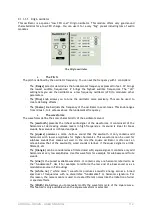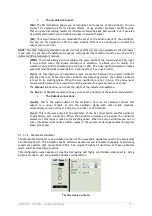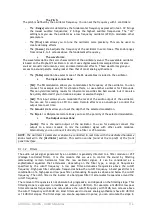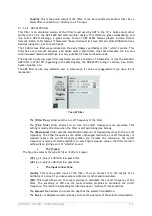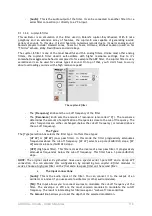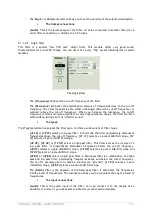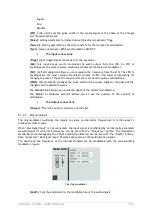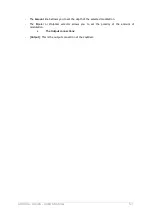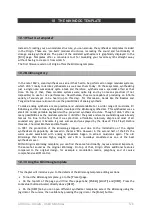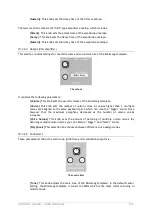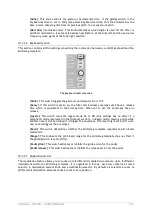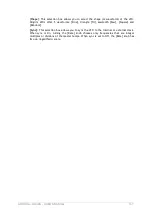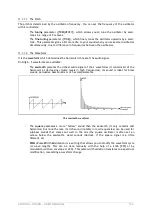
ARTURIA – ORIGIN – USER’S MANUAL
124
-
Square
-
Sine
-
Random
-
[
PW
]: knob which sets the pulse width of the square signal or the phase of the triangle
and the sawtooth waves.
-
[
Delay
]: setting parameter for delay time setting after a keyboard Trigg.
-
[
Fade in
]: setting parameter of the time constant for the increase of modulation.
-
[
Sync
]: tempo (internal or MIDI) synchronization ON/OFF
•
The Input connections:
-
[
Trigg
]: input trigger signal connection for the envelope.
-
[
AM
]: this input allows you to modulate the audio output from the LFO. An LFO or
envelopes are the most common modulator modules for this kind of modulation
-
[
FM
]: the FM modulation allows you to modulate the frequency from the LFO. The LFO or
envelopes are the most common modulator module for FM. The result is interesting for
changing the rate of the LFO for special effects or random frequency modulations.
-
[
PWM
]: this modulation changes the pulse width of the square signal or the phase of the
triangle and the sawtooth waves.
-
The
Amount
knob allows you to set the depth of the selected modulation.
-
The
Bi
polar or
Uni
polar selector allows you to set the polarity of the amount of
modulation.
•
The Output connections:
-
[
Output
]: This is the output connection of the LFO.
9.1.2.4
Ring modulator
The ring modulator multiplies two signals to create non-harmonic frequencies. It is then easy to
produce metallic sounds.
When “Mul Signal Input” is not connected, the input signal is multiplied by an internally generated
sinusoid signal for which the frequency can be set with the “Frequency” button. The modulation
amplitude and subsequently the effect amplitude obtained can be set with the “Depth” button.
Once connected, “Mul Signal Input” becomes the source of the multiplicative signal.
The depth and the frequency of the internal sinusoid can be modulated with the corresponding
modulation inputs.
The ring modulator
-
[
Depth
]: Sets the amplitude for the multiplication of the audio signals

